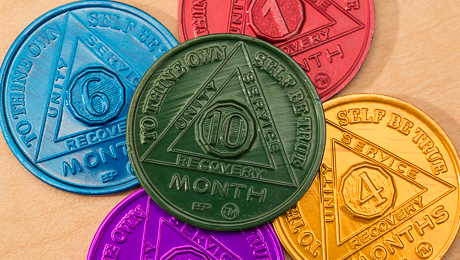Three years ago, like most college freshmen, Tim Rabolt was just trying to survive the usual college firsts, from doing laundry to grocery shopping and picking a major. But as a student recovering from addiction, he had a different set of priorities.
“It was tough and sort of isolating,” said Mr. Rabolt, who is now a junior at the George Washington University. “I was just figuring things out, but also trying to balance recovery, academics, work, my personal life and my career goals.”
To ease the transition, he and a few other students formed Students for Recovery (SFR), a support group under the university’s Center for Alcohol and other Drug Education that offers weekly meetings, social outings and a safe zone to discuss their struggles with addiction.
“It’s a daily battle to stay clean and sober, and doing it alone is nearly impossible,” Mr. Rabolt said. “We help each other out as much as we can, but there are some things we can’t handle without the help of the administration.”
Though the university already offers a number of resources for students managing their recovery, a $10,000 grant recently awarded to CADE by Transforming Youth Recovery (TYR) and the Stacie Mathewson Foundation will boost campus-wide education and outreach efforts.
“This generous grant will move GW into the national conversation on ways to serve this emerging college student community,” CADE Associate Director Alexis Janda said. “We will focus on raising awareness of the experience of students at various stages of recovery through education and activities.”
The grant will link GW to a network of 48 universities that have developed outreach programs and resources to help students stay sober. Each school also contributes to an online “community asset” map that displays collegiate recovery services across the nation.
Ms. Janda will work with Cristina Hunter, the collegiate program manager at TYR, to monitor the development of resources throughout the three-year grant cycle.
“CADE will use this funding to enhance resources and provide additional direct support to identify and address the needs of students in recovery,” Senior Associate Dean of Student Mark Levine said. “We recognize the importance of expanding and promoting the SFR community in order to reach students who are in need of these services.”
In addition to SFR meetings, students can also attend the Continuing Care for Alcohol and Substance Abuse group launched by the University Counseling Center in fall 2013 to provide structured peer support led by a mental health professional, UCC Director Silvestro Weisner said.
“Students who find that their behavior is interfering with their physical, emotional, academic or interpersonal health should know that they do not need to manage these issues alone,” Dr. Weisner said.
Mr. Rabolt said that attending the UCC group sessions and SFR meetings with other students in various stages of recovery offers a balanced perspective to his ongoing process.
"It is a process for everyone but from my experience, if you come to college clean and sober, it's infinitely easier to stay clean and asober than if you are already in college and realize you have a problem," Mr. Rabolt said. "Sharing our struggles when we get together helps me feel greatful and thankful."
Students who are worried that they are at risk for substance misuse or addiction can pursue intervention services through CADE. The staff uses a number of tools to assess a student’s risk level and can refer them to campus and community services, Ms. Janda said.
“We have an open-door policy for students who fear they may be struggling with abuse and addiction,” Ms. Janda said. “CADE is here to help.”
Mr. Rabolt said that continued support from across the university has been invaluable in making students recovering from addiction feel like a valued part of the campus community.
“It’s important to recognize that we are a part of GW, and we are still students,” Mr. Rabolt said. “This grant is about much more than the money, because it will not only establish our presence on campus and in the D.C. community, but it also shows how efforts to support students in recovery are being embraced at a university, local and national level.”


